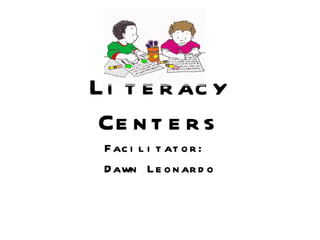The document provides guidance on establishing and managing effective literacy centers in the classroom, including planning activities aligned with curriculum, modeling procedures, and ensuring students stay focused through structured routines, clear expectations, and engaging independent or small group work that practices literacy skills. Effective centers require advance preparation of organized materials and activities, as well as strong classroom management to keep students on task.




























